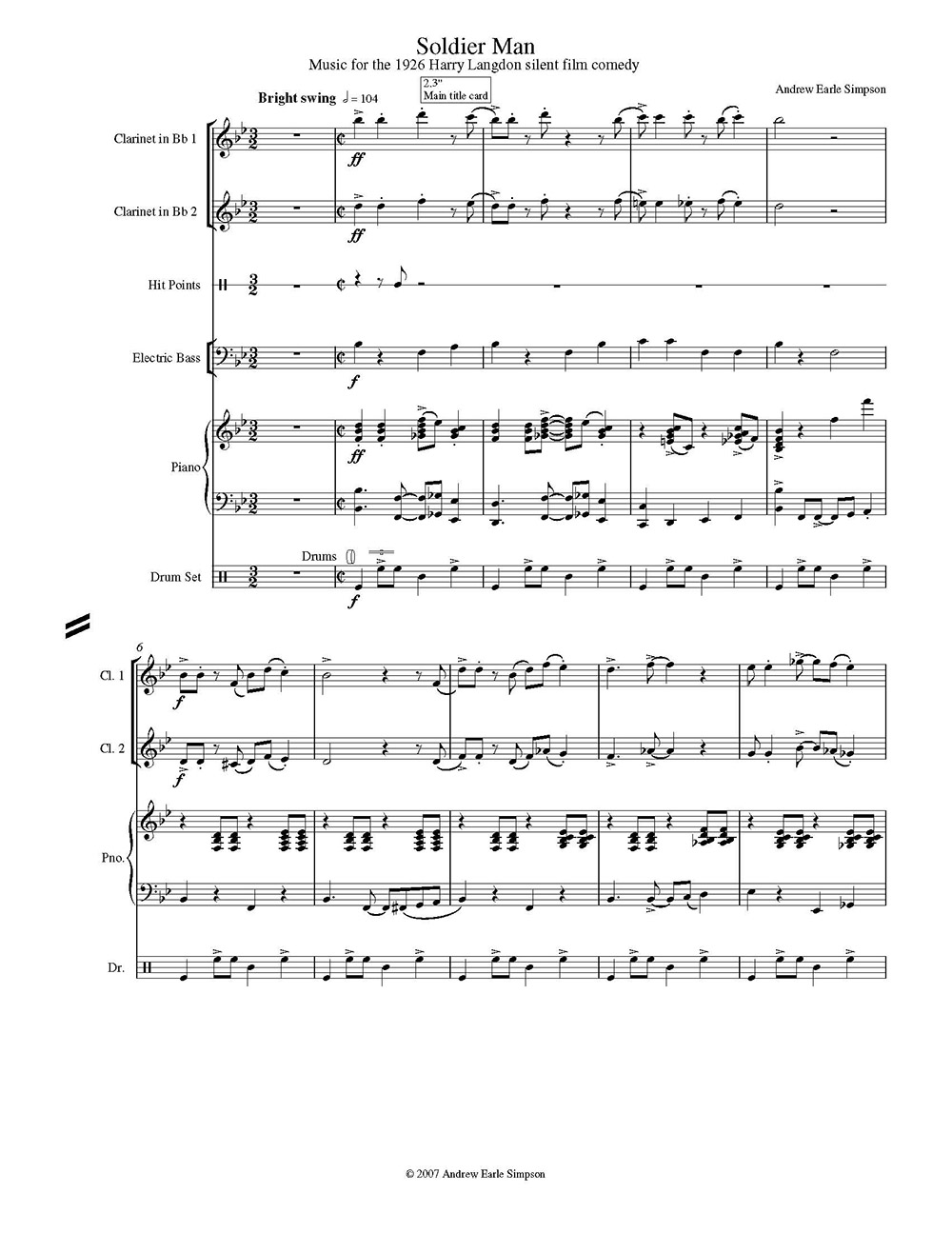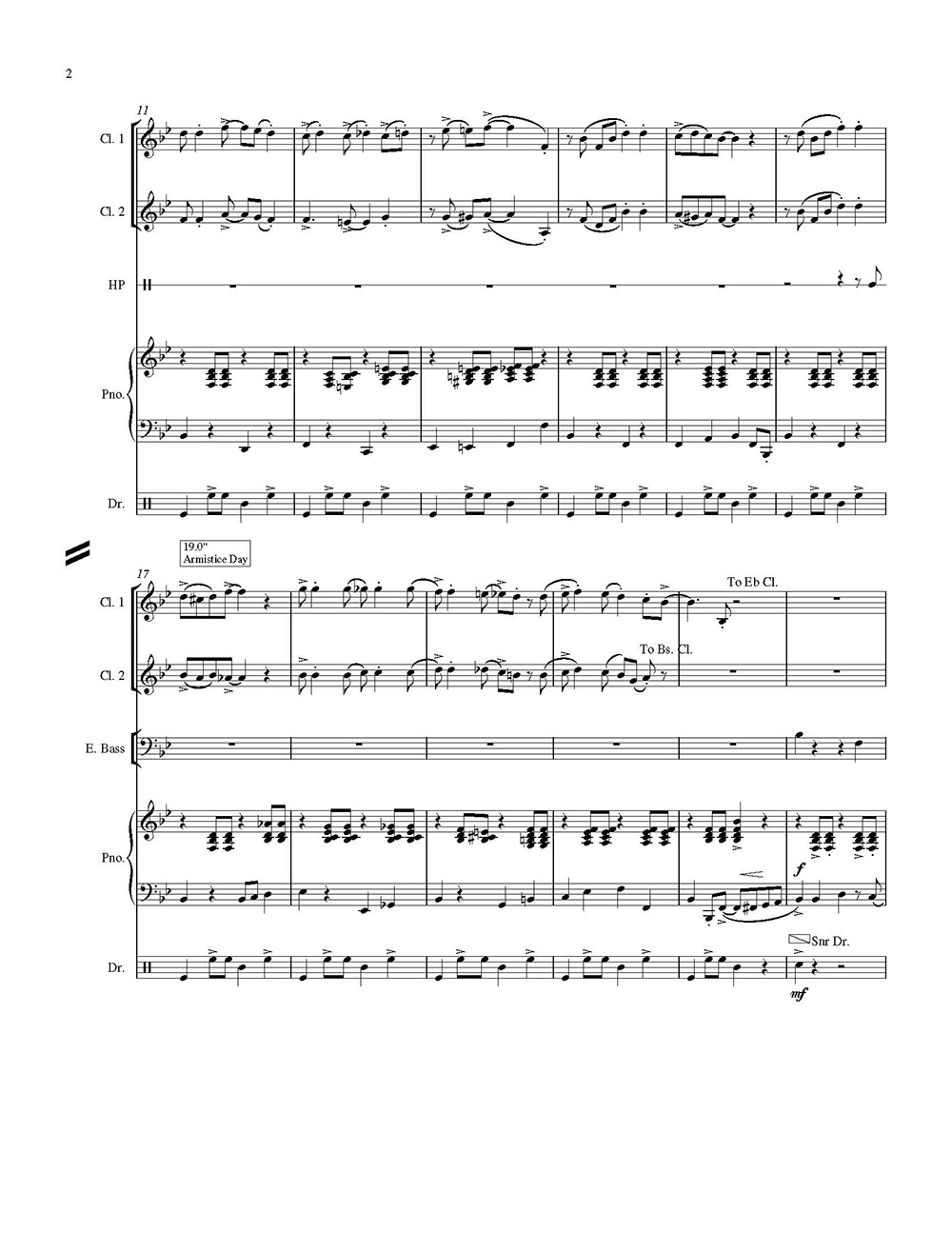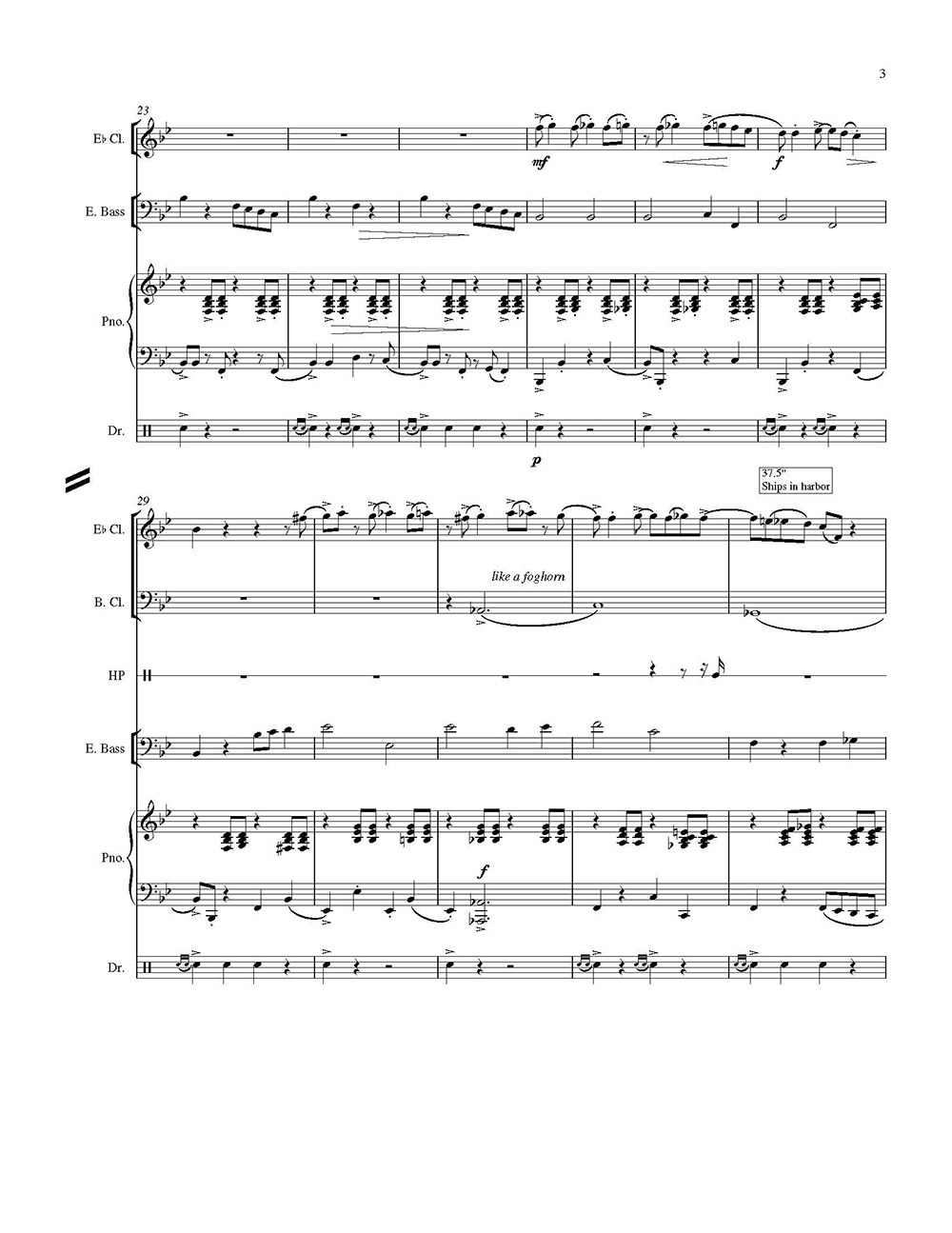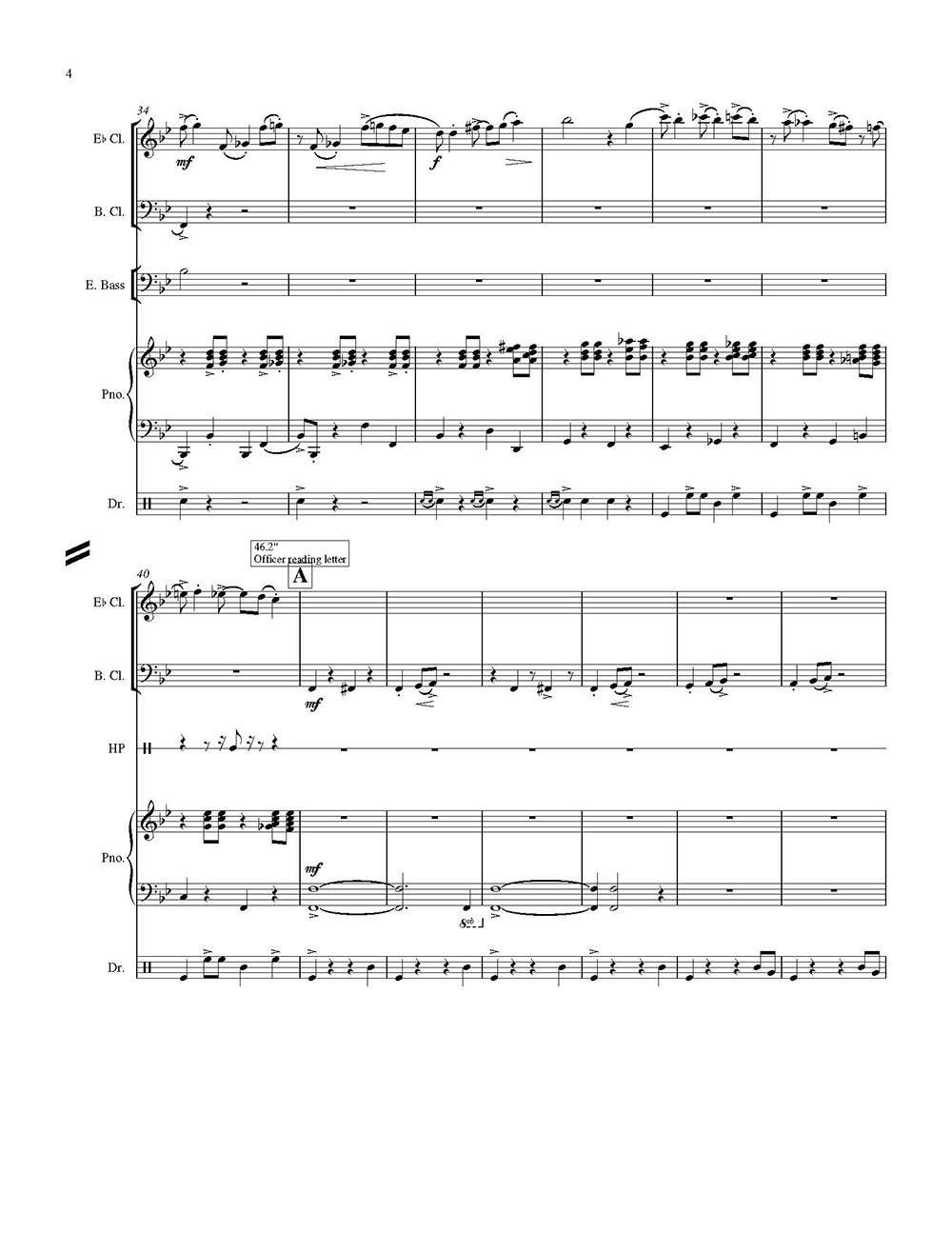Soldier Man (2007)
for chamber ensemble, 31 minutes
Instrumentation
2 clarinets, baritone saxophone, piano, electric bass/guitar, percussion
DVD
Lost and Found: The Harry Langdon Collection, Allday Entertainment (distributed by Facets) (2007)
Watch + Listen
This is a clip from a wonderful 3-reel Harry Langdon comedy, music by me and performed by The Snark Ensemble (Ben Redwine, clarinet; Maurice Saylor, bari sax; Phil Carluzzo, electric bass; Adam Green sitting in with great drumset support, me on piano). Setup: Harry is the last American soldier left in Europe at the end of WW I (he doesn't know the war is over). As the clip opens, he is chasing a farmer whom he takes for an enemy combatant. The farmer is running away not because he is an enemy, but because Harry has a brace of dynamite stuck to his rifle (which he doesn't know about). The next scene finds Harry underneath a cow (aptly epitomized by Maurice's bovine bari sax). From the DVD box set "Lost and Found: The Harry Langdon Collection," by All Day Entertainment. Many thanks to David Kalat for permission to upload this sample.
Main Title
Exploding Cow
Performers: The Snark Ensemble
Film Synopsis and Musical Notes
Soldier Man (1926) is a quirky three-reeler in which Harry Langdon plays two roles: a befuddled American soldier still in Europe a year after the close of World War I, and the equally befuddled (this time through excessive drinking) monarch of Bomania, King Strudel XIII.
Harry the soldier wanders Europe after his escape from a German prison camp on November 11, 1918 (he writes in his journal: "Escaped from prison while the Germans were celebrating something or other."), looking both for his unit and for a good meal. He discovers a Bomanian farmer using left-over dynamite to clear a field of stumps; mistaking the farmer for an enemy soldier, Harry attemps to take the farmer prisoner. A lit bundle of dynamite has, in this process, managed to attach itself to the butt of Harry's rifle, and it is this which makes the farmer flee in terror.
The scene changes to the court of Bomania, where perpetually-drunk Strudel XIII's kingdom - and his Queen (Natalie Kingston) - are in perpetual rebellion. The King is urged to sign a peace treaty with rebels; however, there are some (including General Von Snootzer) in whose interest the perpetuation of the rebellion lies. Snootzer abducts the King and attempts to take the throne himself...only to discover, upon his return from stowing the real King, another King in his place. Harry the soldier bears an uncanny resemblance to King Strudel, and so Harry is propped up by the courtiers as the real King.
The train of misunderstandings and events which follows has some hilarious and quirky moments: Harry wrestling a suit of armor for a piece of fruit, Harry using his crown as a vomit-catcher, Harry seducing the Queen (as with so many Langdon films, this features a knife-wielding heroine). In what appears to be a deliberate nod to Chaplin's 1918 WW I film Shoulder Arms (for which I have also provided a score), Harry awakes at the end of his exploits to discover that his adventures were but a dream.
The score combines updated jazzy-militaristic music (main title) with fast-driving jazz-blues. The music associated with King Strudel and the court of Bomania features quirky waltz and dance music in an emulation of early 20th-century European composers such as Arnold Schoenberg or Alban Berg. The image of a decadent, slightly silly Europe, symbolized by a nondescript Eastern European royal state (compare the Marx Brothers' Fredonia in Duck Soup), appears as a common American trope, and so the music in turn serves as parody. The love theme, however, is genuine and lyrical, without irony: I have interpreted the Queen's love for her husband (and her sorrow at his drunkenness) as genuine. This, in my view, lends the film depth; without this single instance of genuine affection (and, perhaps, the affection of Harry's real wife for him in the final scene), the film could otherwise easily be a somewhat shallow train of comic stunts.
This score features electric guitar - the first time I have written for this instrument - and Adam Green joins the ensemble with terrific playing on drum set and percussion. A moment of which I am particularly proud is that at which Harry thinks a cow has exploded because of eating dynamite. At the moment of explosion, several of the members of the ensemble took balloons and added the sound of screaming bladders to the texture. This "exploding bovine concertino" occurs around 10:47 in the film. Ben Redwine again joins the Snark Ensemble with brilliant high clarinet playing.
—Andrew Earle Simpson



